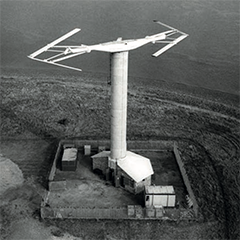The pace of the clean energy revolution is speeding up in an international effort to curb global warming and offshore wind power is set to play a pivotal role in achieving the CO2 reduction targets of many of the world’s coastal countries. It is widely perceived that offshore wind is set to grow by around 9,900% through to 2050 which, according to IRENA, the International Renewable Energy Agency, will take currently installed capacity of just over 10 GW to nearly 1,000 GW by 2050. This is a view widely shared by industry monitors, such as, DNV and the Global Wind Energy Council.
So, the future for the industry is looking good, but using current technology will they really be able to achieve these ambitious targets? According to WindEurope, the average size of wind turbine currently being installed offshore is 7.2 MW; that would mean 137,500 machines would be needed by 2050, or nearly 4,600 every year. It is true that the three main turbine manufacturers (Vestas, Siemens/Gamesa and GE) all have machines ranging between 14 – 15 MW in the pipeline, but these are not expected to be commercially available until 2024/25.
The machines currently in development are huge; with the GE 14 MW machine having a 220m rotor diameter and a single blade length of 107m; while the Vestas 15 MW machine is being designed to have a rotor diameter of 236m and a single blade length of 115.5m. Each blade takes 2 days and 100 men to produce and with their nacelles the size of a house and weighing in at around 600 tonnes; they are relatively slow to produce, averaging 1 complete machine a week.
The high level of demand, together with the desire to reduce costs further are the driving factors for the industry to continually try to develop ever larger machines. A wind turbines power output is directly related to the swept area of its blades and in turn the volume of wind it can capture. Larger turbines mean that fewer are needed to achieve a given power output and that equates to: fewer foundations, less inter array cable connections, lower installation costs and fewer machines to maintain.
Although there are other options, Horizontal Axis Wind Turbines (HAWT’s) are currently the configuration of choice. Resembling a propeller on a tower, these machines’ blades rotate on a horizontal shaft connected via a main bearing to their drive train housed within a nacelle. The nacelle is mounted on the top of their support towers and needs to be rotated into the direction of the wind by means of a yaw mechanism. To regulate the blades rotational speeds and to optimise power output, the blade’s pitching angle is adjusted using positioning motors; which together with the yaw system, power generation, power conversion, nacelles environment and system monitoring functions, are controlled by a computerised system.



























